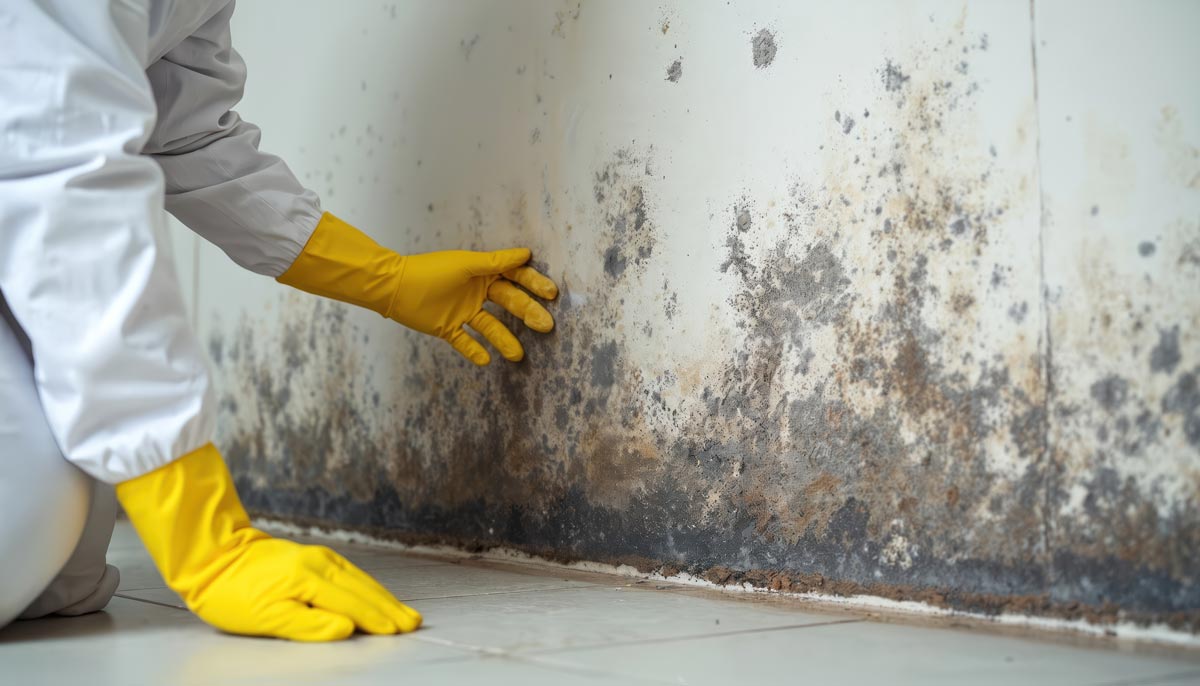When a building suffers damage from flooding, leaks, or extended periods of high humidity—as is common here in South Louisiana—the cleanup process often involves more than just removing visible water. Mold, bacteria, and other contaminants can take hold in hidden areas, and even the best remediation efforts must be followed by one final, crucial step: post-remediation verification.
This phase of environmental recovery is where the difference between “looks clean” and “truly safe” becomes clear. Without proper verification, all the time, effort, and expense spent on remediation may not amount to much in the long run.
Post-remediation verification (PRV) is the structured process of assessing whether mold, microbial growth, or other environmental hazards have been fully removed from a space. It’s not a guess or a visual assumption. It involves specific testing, inspections, and clear standards for what constitutes a clean and safe environment. The idea is simple—if remediation was done correctly, there should be measurable proof of it.
In my work across Louisiana, especially in areas frequently affected by storms and high humidity, I’ve seen the consequences when PRV is skipped. Moisture might remain in subfloors. Mold can regrow behind drywall. Odors return. Occupants continue experiencing health issues. What should have been a clean slate becomes a source of frustration, and in some cases, litigation.
Post-remediation verification provides protection for all involved: building owners, tenants, contractors, insurers, and the restoration team. It’s a necessary line in the sand that signals the work was not just completed, but completed correctly and safely.
A typical PRV process includes several steps, depending on the scope and type of the original damage. For mold, it often involves air sampling—collecting air from both inside and outside the previously contaminated area to determine if spore levels have returned to normal levels. Surface samples may also be taken, especially in areas that were heavily affected or where remediation involved cleaning rather than removal.
But it doesn’t stop there. A proper PRV includes checking for residual moisture using specialized meters. It also involves a thorough visual inspection to make sure no dust, debris, or visible microbial growth is left behind. Containment barriers are reviewed to ensure they were removed properly, and that no cross-contamination occurred during the remediation work.
One of the biggest benefits of PRV is its independence. The best practice is to bring in a third-party specialist to perform the verification—not someone from the remediation team. This provides an unbiased evaluation of the results, and it prevents any conflicts of interest from creeping into the final assessment. In insurance claims, property sales, or commercial rebuilds, that independence holds real value.
There are also practical benefits to PRV beyond safety and legal documentation. The verification report becomes a green light for construction crews to begin repairs or renovations. Without it, there’s always a risk that materials will be installed over contaminated surfaces, only to trap moisture or mold inside walls or flooring—turning a fix into a ticking time bomb.
In public buildings—schools, medical facilities, government offices—PRV is often mandatory. But it’s just as important for homes and private businesses. It’s not just a formality. It’s the confirmation that remediation was done according to industry standards and that reoccupying the space won’t pose ongoing health risks.
Standards like those published by the IICRC (Institute of Inspection Cleaning and Restoration Certification) outline how remediation and post-verification should be performed. These guidelines set criteria for what levels of cleanliness and dryness must be met before a space can be declared safe. Relying on these industry protocols helps keep everyone on the same page, whether it’s the contractor doing the work, the inspector verifying the outcome, or the property owner signing off on the results.
It’s also worth mentioning that PRV is especially important in areas with recurring water issues. In Southeast Louisiana, we deal with hurricanes, heavy rainfall, high humidity, and older construction—factors that all increase the likelihood of water intrusion and mold growth. Some homes or buildings may go through multiple rounds of remediation over the years. Each time, it’s essential to know that the work was done thoroughly and documented properly. Without verification, there’s no clear end point—just the risk of further problems.
Many people assume that post-remediation verification is expensive or time-consuming, but compared to the cost of repeated remediation, tenant complaints, or liability issues, it’s a smart investment. It’s a tool for accountability and peace of mind.
Post-remediation verification isn’t about checking a box. It’s about finishing the job the right way. In restoration and environmental cleanup, success isn’t just about removing damage—it’s about restoring confidence that the structure is safe, habitable, and ready for whatever comes next.
For those managing properties, coordinating construction timelines, or working with insurers, PRV is a critical step that streamlines the next phase of work. For homeowners and business owners, it delivers assurance that a difficult chapter has truly come to a close.
In the long run, buildings with documented, verified remediation are more valuable, more trusted, and less likely to suffer repeat issues. That’s the kind of outcome that benefits everyone.


